How to make a living room lighter – an interior designer's 10 tips for a creating brighter space
Patrick Gilles of Gilles & Boissier Studio passes on his techniques, tricks and tips for enhancing the natural light in your living room

- 1. Examine the natural light – and the effects you want to create
- 2. Consider fluctuations in lighting levels
- 3. Use mirrors
- 4. Create reflections with gloss finishes
- 5. Consider pale, clear colors
- 6. Play with matte finishes, too
- 7. Consider how window treatments affect light quality
- 8. Incorporate artificial lighting subtly
- 9. Use dimmer switches and lamps
- 10. Use candles for atmosphere
- FAQs

Making a living room lighter can enhance its mood, make it feel more spacious, and even change how you feel about it.
'Light is one of the first things I consider when I walk into a space because it changes everything; it is fundamental to the personality of the room and how that impacts your mood,' says interior designer Paris-based Patrick Gilles of Gilles & Boissier Studio.
We asked Patrick for the techniques he uses to lighten a living room and, of course, you can use many of them to make your whole house lighter, too.
How to brighten a living room
To make a living room lighter, or to make any dark room brighter, you may need to consider other techniques than Patrick mentions below, such as decluttering, particularly around windows which need to be clear and clean to allow light to enter the room. However, brightening a living room is not just about natural daylight; planning living room lighting to the last degree is vital too. Below, Patrick gives his advice on both.
1. Examine the natural light – and the effects you want to create
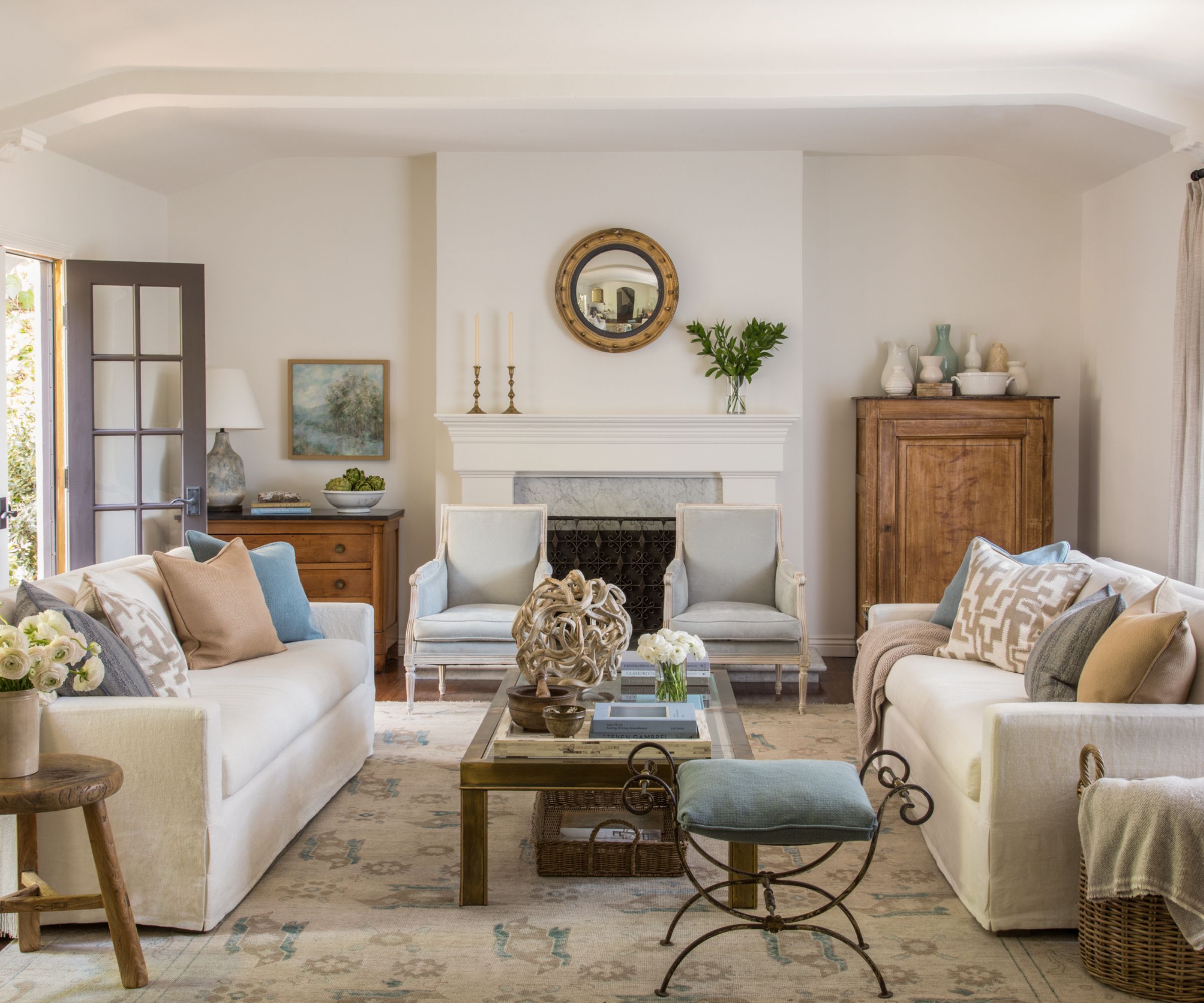
'When you are working on the living room's layout, you always have to think about the impact of the light. It’s part of the storytelling that we do as designers: what is the sensation when you arrive?
'There aren’t hard fixed rules on how you tackle a room and its light source because it depends where you are, which country, or even if you’re in the city or the countryside – the light is different even between Paris and London.
'Then it also depends on the position of the room – which way does it face? How big are windows and can you change them? You then need to think about what you want from the space – do you want it light and shimmering, or dark and calm and cosy? There are lots of factors and there isn’t one solution.'
Consider, too, the best colors for north-facing living rooms – these spaces are typically the most light-starved.
2. Consider fluctuations in lighting levels

'There can even be two different feelings in a room, that you can create with different treatments of the light.
'We’re working on a project in Lake Como, Italy, where the part of living room that is practically on the lake feels like you’re living on a boat; it’s very bright and light with very large windows. But at the other end, there is almost no light.
'The contrast is very strange and we have to come up with solutions to bring more light back there.'
Long living rooms, particularly those with smaller windows at one end often fall prey to darker areas, particularly in the center of the room. You can use the techniques below to bounce light into them.
3. Use mirrors
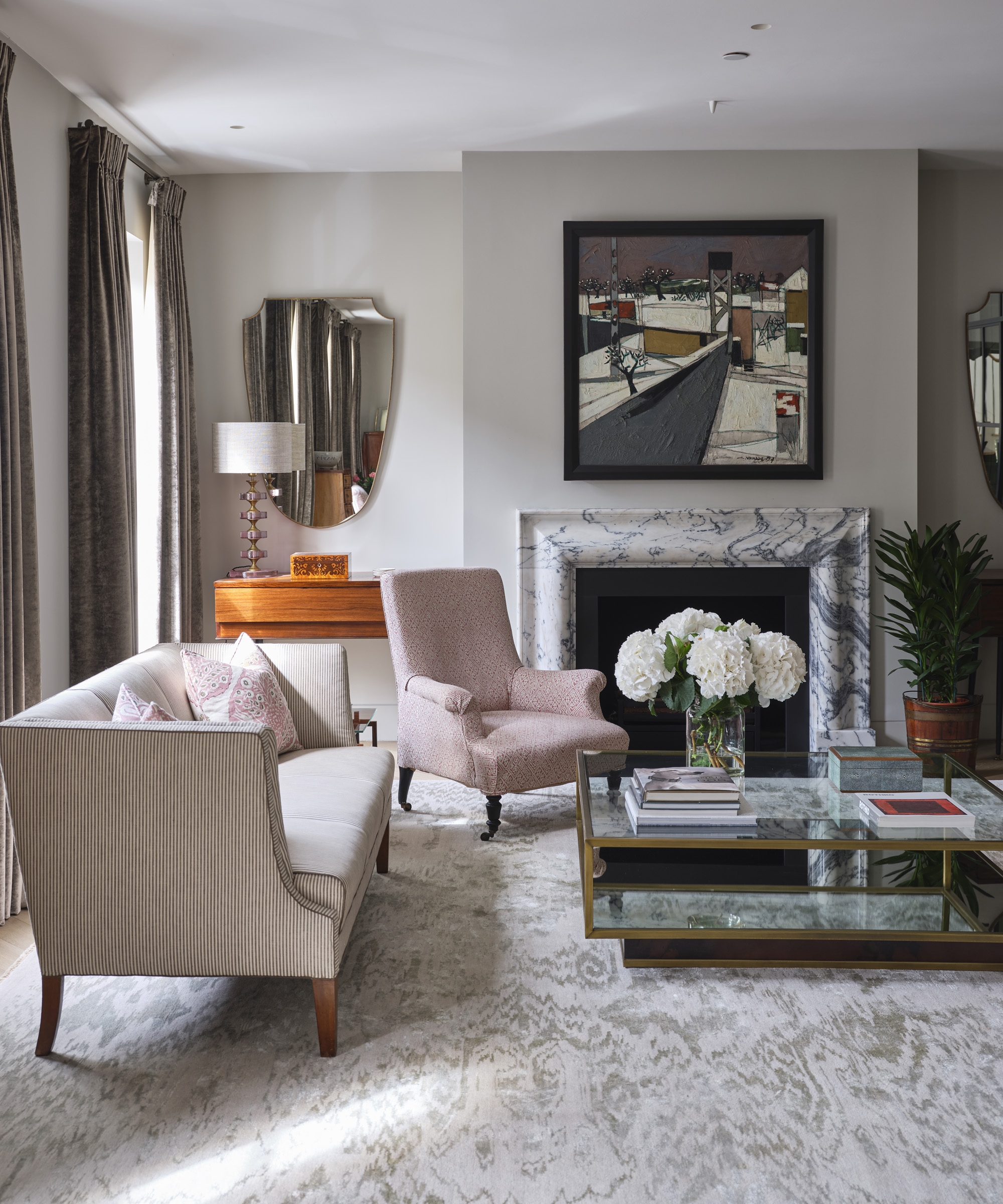
'When you don’t have a lot of space, mirrors can help you play with reflections of light,' says Patrick.
But living room mirrors are not the only way to make a living room lighter.
'Materials can play their part. Marble gives off different reflections depending on whether it is matte or polished.'
4. Create reflections with gloss finishes
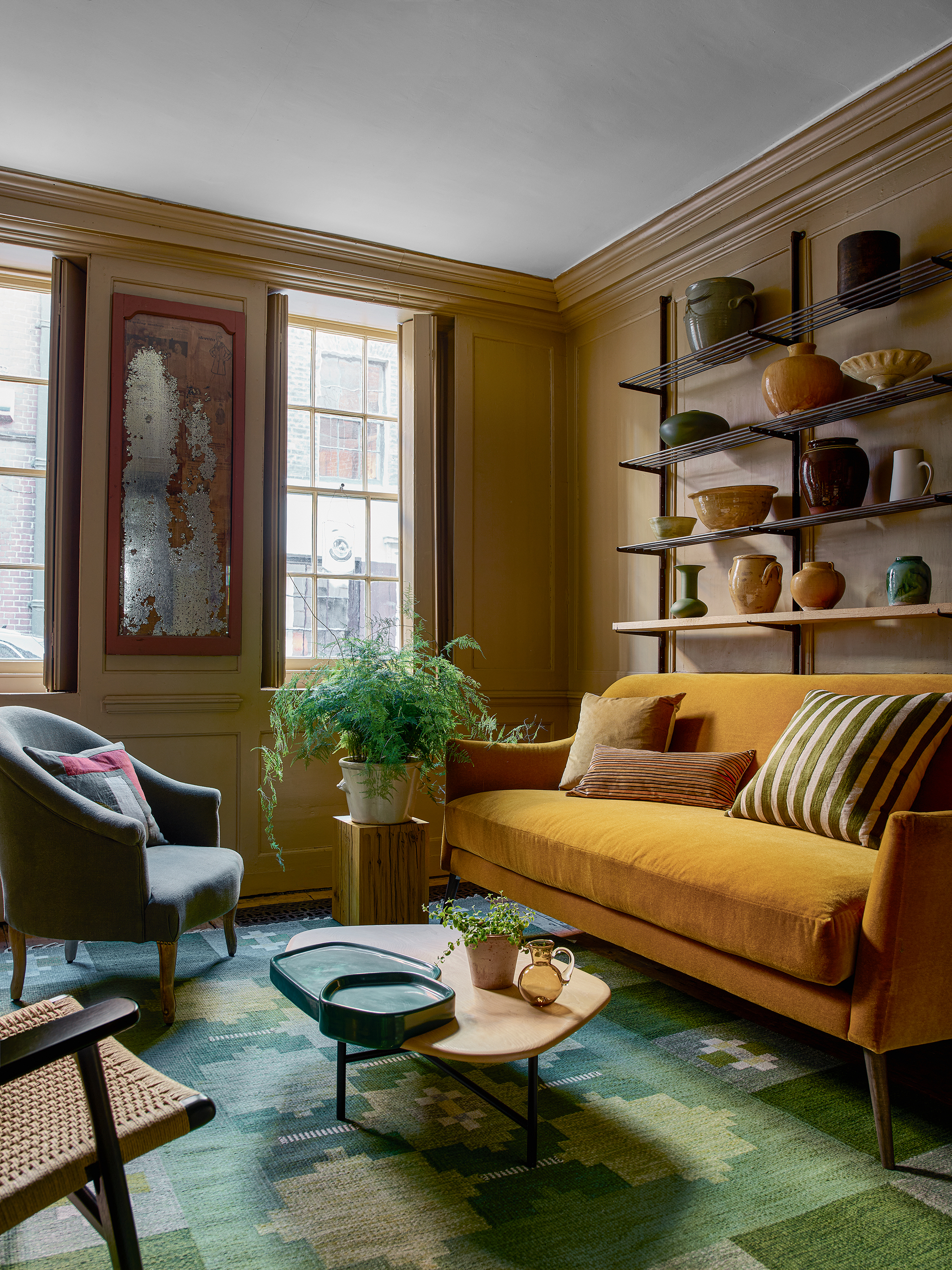
'I’m not usually a fan of shiny, painted surfaces, but in my own room I have a chest of drawers that is glossy, standing in front of matte walls.
'Even though the color palette is very simple, the reflections provide the interest – my own reflection and the sky behind me. It’s like a constantly changing painting.'
5. Consider pale, clear colors

Light living rooms of all colors will make a living room brighter, but which colors to choose?
'How you decorate a room does a lot to the light. We often favor light, clear colors – not necessarily white, but light pinks and beige.'
Living room color ideas we love for their brightening yet warm properties include beige living rooms (for lovers of neutrals) and the softer, earthier tones of yellow living rooms.
And dark living room ideas? 'Of course, you can also do the exact opposite, because painting somewhere super dark can be interesting, too,' says Patrick. 'It depends on the atmosphere you want to create.'
6. Play with matte finishes, too
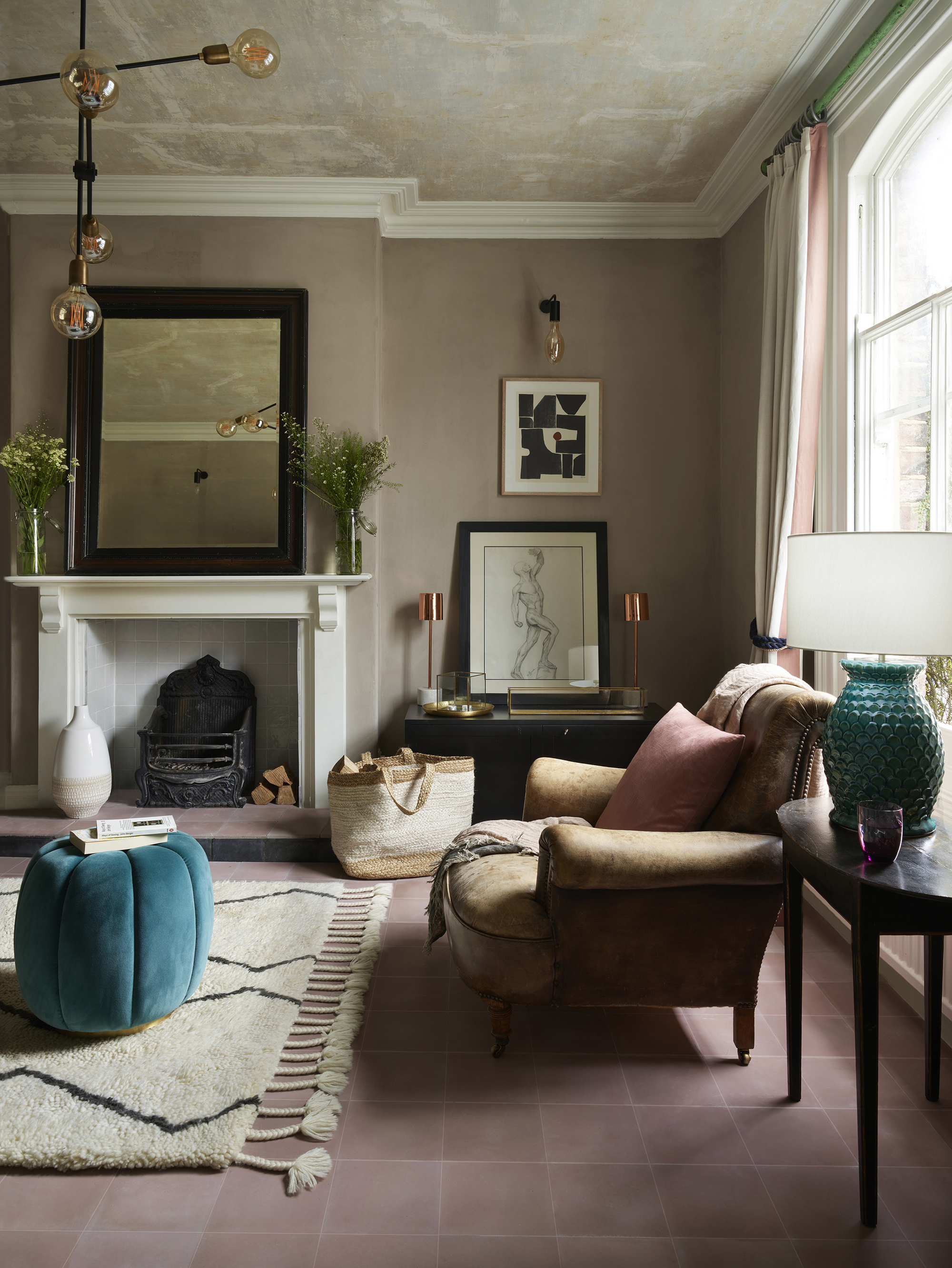
This is where living room floors and walls can be influential.
'Playing around with texture is interesting, too. We are working on a project in the countryside in France in the middle of a forest. The house is super modernist with very high ceilings and big windows, but the walls and floor are matte black. That matte surface does lots of interesting things with the light.'
7. Consider how window treatments affect light quality

Again, Patrick emphasizes the effect of different materials in lightening, or darkening, a room. Of course, sheer living room curtains will allow more light into a living room than heavier drapes, but you can consider other options to create different effects.
'Shutters over windows help filter the light and give a different perception to the space; a blind gives a different feeling – but often in a bedroom, for example, you want a darker option, especially if the room is south-facing.
'Different materials filter the light in different ways.'
8. Incorporate artificial lighting subtly
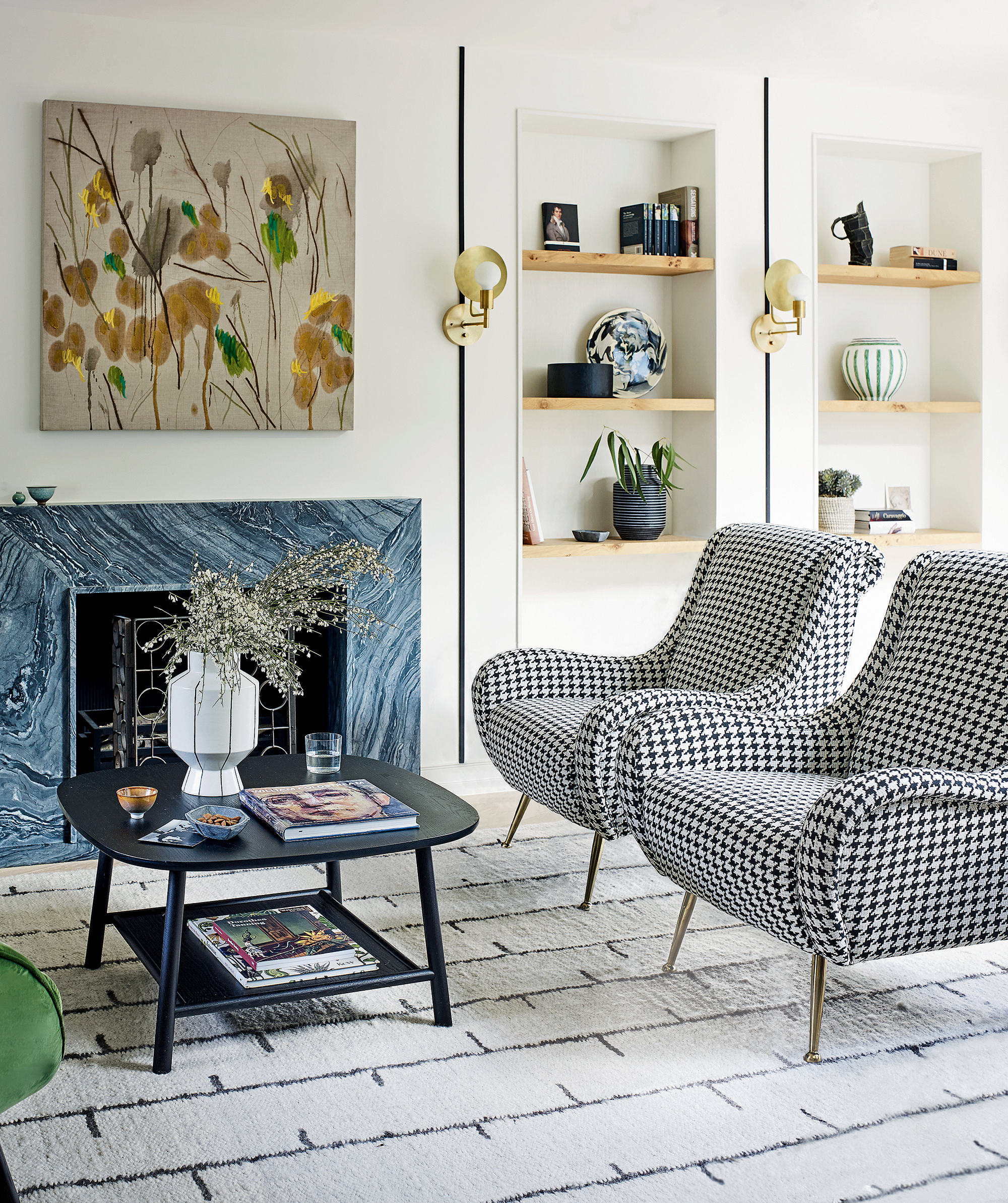
Living room lighting needs to feel welcoming, though there may be some need for task lighting within the space. As Patrick indicates, subtlety is important, as is balance.
'At night there is no natural light and so we have to consider the role of artificial light. I like it to be almost invisible; it needs to feel easy – but that takes a lot of thought. You need to think about who is using the space and what they need from it. With clever use of lighting, you can create different spaces to enjoy in a room.'
9. Use dimmer switches and lamps
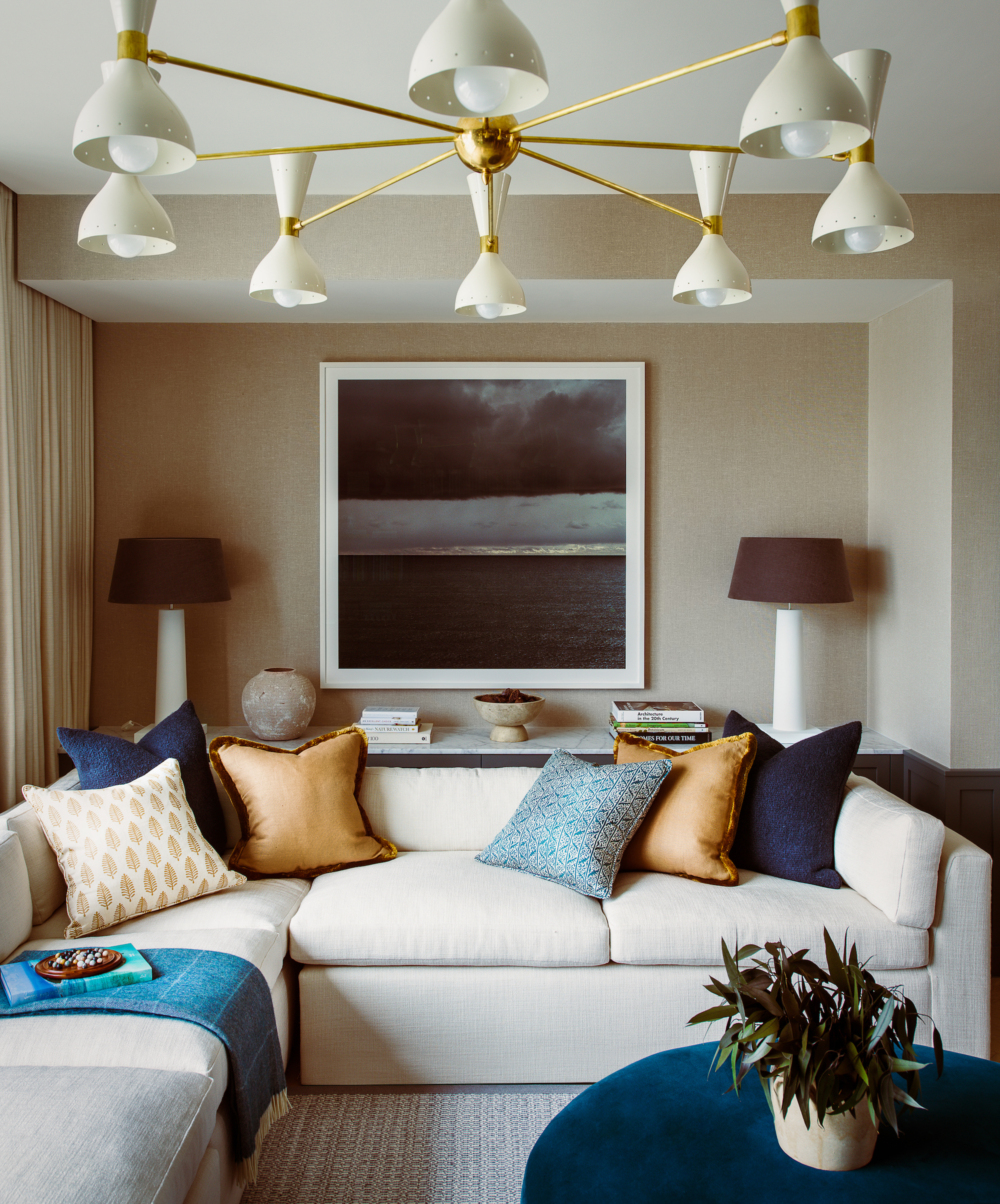
'I think pendants in dining rooms or kitchens are nice to give a general atmosphere, but you must dim them right down; I find people over-light their homes.
'Instead, get your light source from other points around the room. Table lamps and standing lamps are very welcoming.'
Living room ceiling lights, paired with a dimmer, can be extremely decorative, as in the room above, but must, as Patrick advises, be paired with living room wall lights and table lamps so that you can create balanced pools of light around the space.
10. Use candles for atmosphere
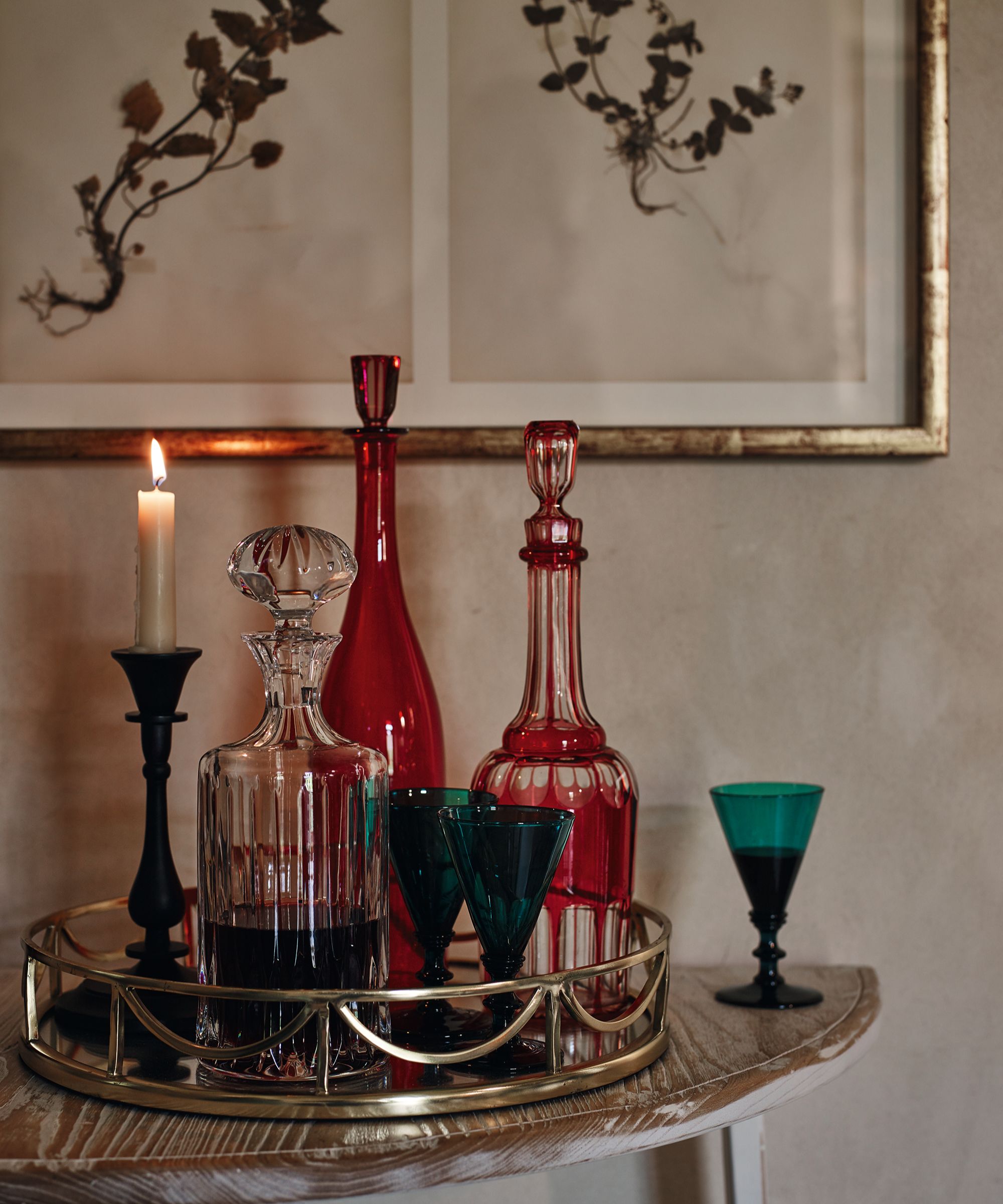
'Candles are gorgeous for the atmosphere they give off; it makes a room feel more mysterious. Even if you have a small apartment, just put a candle on the little table; it provides a beautiful focus point.'
Thanks to Patrick Gilles at Gilles & Boissier Studio; you can follow Gilles & Boissier on Instagram.
FAQs
How can I lighten my dark living room?
Other ways to quickly lighten a dark living room include throwing down a light-colored rug that reflects light upwards. Similarly, swapping out dark artwork for light-colored pieces will have a major impact on the space. Painting a ceiling in a gloss finish is something decorators have started doing more recently and can be really effective and making a dark living room lighter. However, you will need to ensure the finish is perfectly flat as all lumps and cracks will be highlighted.
Another way to get more light into your living room is to look to your furniture choices: light-colored, glass or metallic furniture will all bounce more light around the room, while low-slung pieces, such as a low-backed sofa as opposed to a high-backed piece, will allow more light to enter the room without casting shadows.
Sign up to the Homes & Gardens newsletter
Design expertise in your inbox – from inspiring decorating ideas and beautiful celebrity homes to practical gardening advice and shopping round-ups.

Jessica Salter is an interiors writer who interviews the leading interior designers and tastemakers each month in Homes and Gardens about their inspiring, yet practical ways to instill a slice of high-end design nous in our own homes and lives.
Jessica has had the luxury of snooping around some of the most stylish houses in the world, such as Pearl Lowe’s Cotswolds manor house, designer Matilda Goad’s London house and the interior design studio and husband and wife duo Buchanan Studio. She delights in asking the biggest names in the world of interiors, from Nina Campbell to Sophie Ashby, the really practical questions that we all want answers to – such as where to source that perfect living rug, kitchen cupboard handle, or paint finish – and loves finding out the design hacks that we can all achieve, especially on a budget.
After studying English Literature, Jessica started her career in journalism as a news reporter at the Daily Telegraph, before moving into the paper’s Saturday Magazine as a commissioning editor of lifestyle and food features, interviewing cultural influencers from authors and actors to politicians and inspirational figures, reporting on key trends across the sectors of health, fitness and wellbeing.
-
 5 things people with clean upholstery always do – simple, quick and oh-so-effective
5 things people with clean upholstery always do – simple, quick and oh-so-effectiveEnsure your furnishing looks clean year-round with these expert tips
By Seraphina Di Mizzurati Published
-
 7 native perennials to plant in April – for glorious flowering displays to attract bees, butterflies, and hummingbirds
7 native perennials to plant in April – for glorious flowering displays to attract bees, butterflies, and hummingbirdsDiscover some of the best perennials to plant in April to make your garden a hotspot for wildlife
By Drew Swainston Published